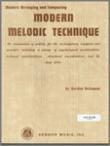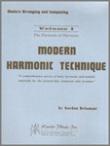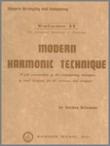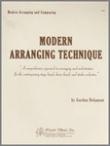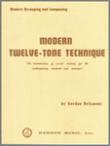MODERN CONTRAPUNTAL TECHNIQUE
Modern Arranging and Composing
Gordon Delamont
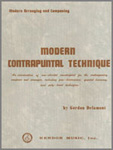
Cat #: KN-20930
Retail Price: $14.95
Our Price: $14.20
This item usually ships within 5 to 7 business days.
Questions?
Please call +1-518-587-1102 or email us.
Edition: Paperback Book
An examination of the non-chordal counterpoint for the contemporary composer and arranger, including pan diatonicism, quartal harmony and poly tonal techniques.
FOREWORD:
This book is intended to give the student of modern music an understanding of that type of counter- point which is related to scales but which is not necessarily related to traditional chords and chord progressions. The reader who has a knowledge of stricter contrapuntal style will have an advantage, but such knowledge isn't essential. It is assumed, however, that the reader has an under- standing of basic harmony, including the use of the non-chordal notes, modulation, modal variants, and altered chords.
The traditional species approach has been retained. It isn't the only way to approach the study of counterpoint, but it is a proven method of presenting the material in order of difficulty, so there seems no reason to discard it. The traditional concept of consonance and dissonance is not employed in linear counterpoint. While there is no law forbidding the resolution of a dissonant interval or chord, there is no obligation to do so. Smooth melodic progression of each part is the primary con- cern. The absence of the rules which govern traditional harmony and counterpoint suggests that linear counterpoint is easier. This is far from the case. The absence of these traditional guiding principles throws much more obligation on the composer. The quality of his work will depend on his own musical judgement, taste and esthetic feeling, as well as on his ability to formulate his own standards. In other words, with more freedom comes more responsibility.
The scope of this book provides for the examination of tonal linear counterpoint only, including pan-diatonicism and poly-modal and poly-tonal techniques. Since this means that each of the lines will be related to scales, with a clear tonic, it is likely that the final sonority will more often than not be some form of the tonic chord, and will often be preceded with a traditional cadence chord such as V, vii, IV, etc. Further, the first sonority will probably, but not necessarily, be a tonic harmony.
The lines themselves will bear a close kinship to the kind of lines associated with normal melodic practice. The vertical sonorities produced by the lines will, however, be remarkably free.
It is hoped that the contrapuntal techniques presented herein will provide the composer and arranger with fresh methods of musical expression, adaptable to harmonic and sectional procedures, as well as to contrapuntal composition.
TABLE OF CONTENTS:
Chapter I -THE MELODIC CONSIDERATIONS
Chapter 2 -TWO PART LINEAR COUNTERPOINT
Chapter 3- THREE AND FOUR PART LINEAR COUNTERPOINT
INDEX




